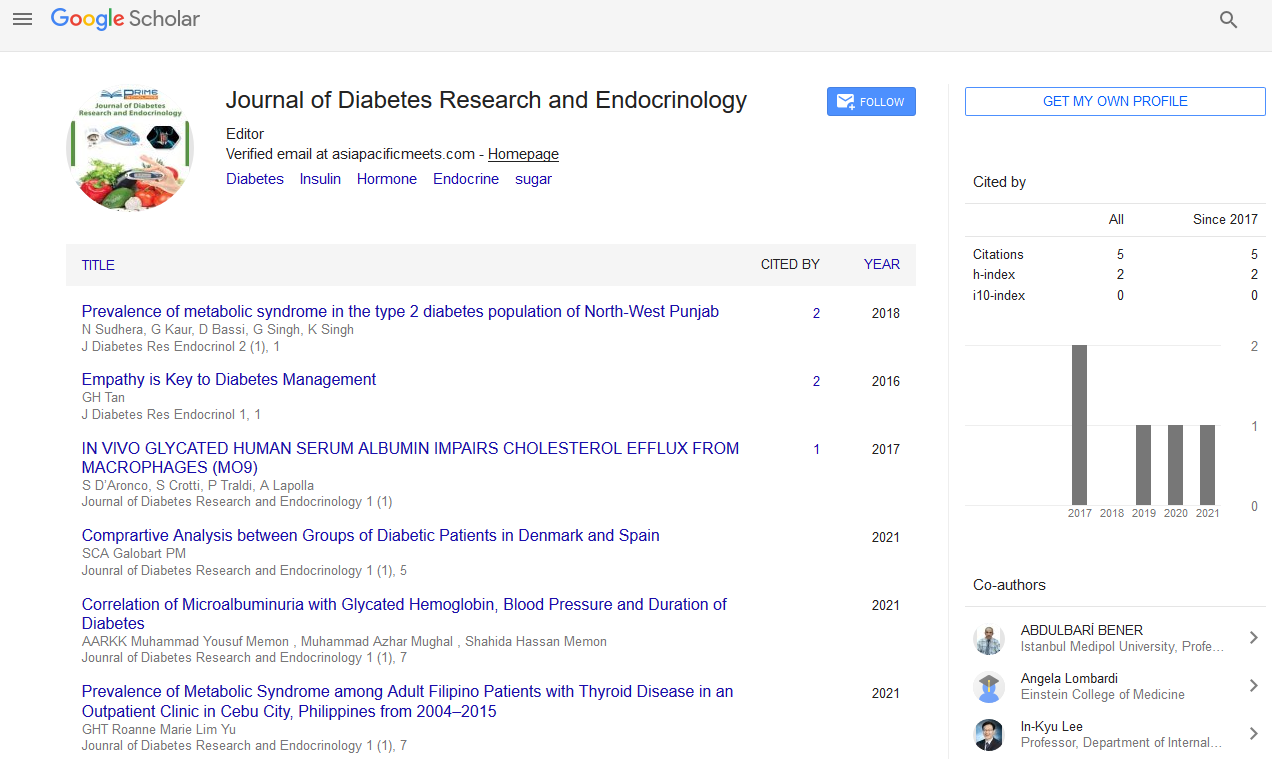Commentary - (2023) Volume 7, Issue 2
If Hypernatremia Persists Despite Adequate Access to Water, Additional Diagnostic Procedures are Required
Yesim Erbil*
Department of Oncology and Nuclear Medicine, Cairo University, Egypt
*Correspondence:
Yesim Erbil,
Department of Oncology and Nuclear Medicine, Cairo University,
Egypt,
Email:
Received: 31-May-2023, Manuscript No. IPJDRE-23-16902;
Editor assigned: 02-Jun-2023, Pre QC No. IPJDRE-23-16902;
Reviewed: 16-Jun-2023, QC No. IPJDRE-23-16902;
Revised: 21-Jun-2023, Manuscript No. IPJDRE-23-16902;
Published:
28-Jun-2023, DOI: 10.36648/ipjdre.7.2.20
Description
A common electrolyte problem, hypernatremia is characterized
by a rise in serum sodium fixation above 145 mmol/L either inordinate
sodium admission or net water shortfall cause hypernatremia.
Babies and old individuals with physical or neurological
hindrances are bound to encounter it. Prior to adjusting the
free water shortfall, recognizing intense and persistent beginning
hypernatremia is fundamental. Typically, hypernatremia is
accompanied by nonspecific symptoms. Anorexia, restlessness,
nausea, and vomiting are some of the early symptoms. Adjusted
mental status, laziness or irritability, and, finally, drowsiness
or unconsciousness follows these side effects. Tremor, hyperreflexia,
ataxia, and twitching are musculoskeletal system
symptoms. In hypernatremia, the sodium level in the blood
is too high. Drying out, which can be welcomed on by various
variables, like not drinking an adequate number of liquids, the
runs, kidney brokenness, and diuretics, is the primary side effect
of hypernatremia. Unreasonable thirst is the principal side
effect of hypernatremia. Laziness, or outrageous weariness and
absence of energy, and perhaps disarray are extra side effects.
In more severe cases, muscle twitching or spasms may also
occur. Because of the rapid removal of water from the intracellular
space caused by the high extracellular sodium fixation,
hypertonic saline is a viable and possibly life-saving treatment
for cerebral edema caused by hypernatremia. The diagnosis is
made through the use of serum sodium testing. To determine
whether there is also volume depletion or overload, a physical
examination is performed. Patients who do not respond to
straightforward rehydration and whose hypernatremia persists
despite having adequate access to water require additional diagnostic
testing. The greatest risk factor is being older than 65.
Additionally, a mental or physical disability may result in diminished
thirst expression, impaired thirst sensation, and/or reduced
access to water. Several simultaneous factors frequently
result in hypernatremia. One of the most serious complications
of hypernatremia is a ruptured blood vessel in your brain. A
subdural or subarachnoid hemorrhage, another type of brain
bleeding, can cause permanent brain damage or even death.
Merge food sources with potassium like sweet potatoes, potatoes,
greens, tomatoes and lower-sodium pureed tomatoes,
white beans, kidney beans, non-fat yogurt, oranges, bananas
and melon. Potassium assists counter the effects of sodium
and may help with cutting down your circulatory strain. In the
treatment of hypernatremia, hypotonic solutions like 5% dextrose
in water (D5W) or, in rare cases, hemodialysis are used to
lower serum sodium concentration (Na). Patients with hypernatremia
and ECF volume overload (excess total body sodium
content) can replace the free water deficit with 5% dextrose in
water (D/W), which can be supplemented with a loop diuretic.
Inhibits sodium reabsorption in the distal tubules, resulting in
increased discharge of sodium, water, potassium, and hydrogen
particles. Sports beverages or electrolyte arrangements might
assist you with getting more sodium assuming that you’re dried
out or perspiring excessively and have low sodium levels. Sugar,
water, and electrolytes like chloride, sodium, and potassium
make up these drinks. Since the kidney can create hypertonic
pee, ordinary saline doesn’t regularly bring about hypernatremia.
Hypernatremia might result from delayed organization of
ordinary saline to a seriously got dried out patient.
Acknowledgement
None.
Conflict Of Interest
The authors declare that they have no conflict of interest.
Citation: Erbil Y (2023) If Hypernatremia Persists Despite Adequate Access to Water, Additional Diagnostic Procedures are Required. J Diab Res Endocrinol. 7:20.
Copyright: ©2023 Erbil Y. This is an open-access article distributed under the terms of the Creative Commons Attribution License, which permits unrestricted use, distribution, and reproduction in any medium, provided the original author and source are credited.

